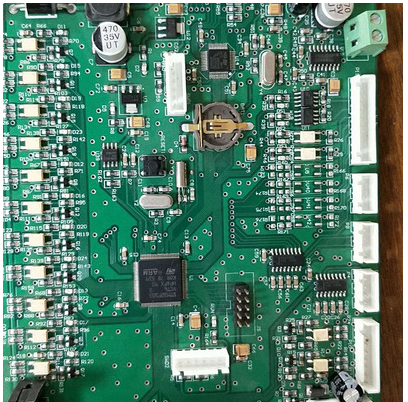In 2007, the rise of Apple mobile phones led to the development of Taiwan's PCB industry and created a large number of top companies such as Zhending and Xinxing.
Every technological innovation of Apple will have a profound impact on the industry.
Since the iPhone4 upgraded the ordinary HDI board to the FPC board for the first time in 2010, Apple has firmly become the promoter of FPC technology.
FPC, the flexible circuit board. It can also be seen from its name that the biggest feature of FPC is flexibility. It has the characteristics of high wiring density, light weight, thin thickness, small volume, and flexibility.
In recent years, FPC has grown strongly, and it can be said that Apple has contributed a lot.

In 2014, the application of FPC in the fingerprint recognition module of iPhone 6 and the application of dual camera of iPhone 7 in 2016, each time Apple's hardware upgrade brought new growth space for FPC.
In 2017, iPhone X components ushered in an unprecedented comprehensive upgrade. The functional innovations represented by OLED full screen, 3D imaging, and wireless charging have enabled the number of FPCs to reach more than 20, and the value of a single machine has been significantly increased from the previous generation of about 30 US dollars. Increase to more than 40 US dollars. Although the iPhone X did not touch the G-spot of consumers and its sales fell short of expectations, Apple still broke through the trillions of market value. Your uncle is still your uncle, and the apple tree is still strong. iPhone, coupled with iPad, iWatch, AirPods, etc., Apple's annual FPC purchases account for about half of the global market. At the same time, it also drives the usage of FPC in the Android camp. On iPhoneX, Apple has already used LCP antennas that are more suitable for 5G communications very predictably. The innovation of LCP antennas will also increase the usage of FPC.
In addition, wireless charging uses FPC coils, which are lighter, thinner and smaller, and have higher sales than copper wires.
As the vane of consumer electronics, Apple has two characteristics. One is the fast iteration frequency of product updates, and it is very bold in the use of new technologies and new processes.
Moreover, many new processes and technologies are driven by Apple, which ultimately promotes the development of the industry.
This requires suppliers to respond quickly and produce mass production in a timely manner.
Mobile phone manufacturers have been advancing on the road of pursuing lighter, thinner and more compact. Apple has also continued to innovate in materials and processes. On printed circuit boards, it has continuously pursued high-density interconnections with smaller line widths and more stacked layers ( HDI) type FPC board.
This year's autumn conference, the new iPhone began to use the most advanced stacked SLP motherboard.
SLP (substrate-like PCB) is a high-end HDI board. SLP adopts a semi-additive processing process, which can finally make the PCB in the mobile phone have more stacked layers and smaller line width and line spacing, thus occupying a smaller volume. Taking iPhone X as an example, the volume of the printed circuit board can be reduced to 70% of the original size while retaining all the chips, freeing up more space for the battery. This of course puts forward higher requirements on the processing technology.